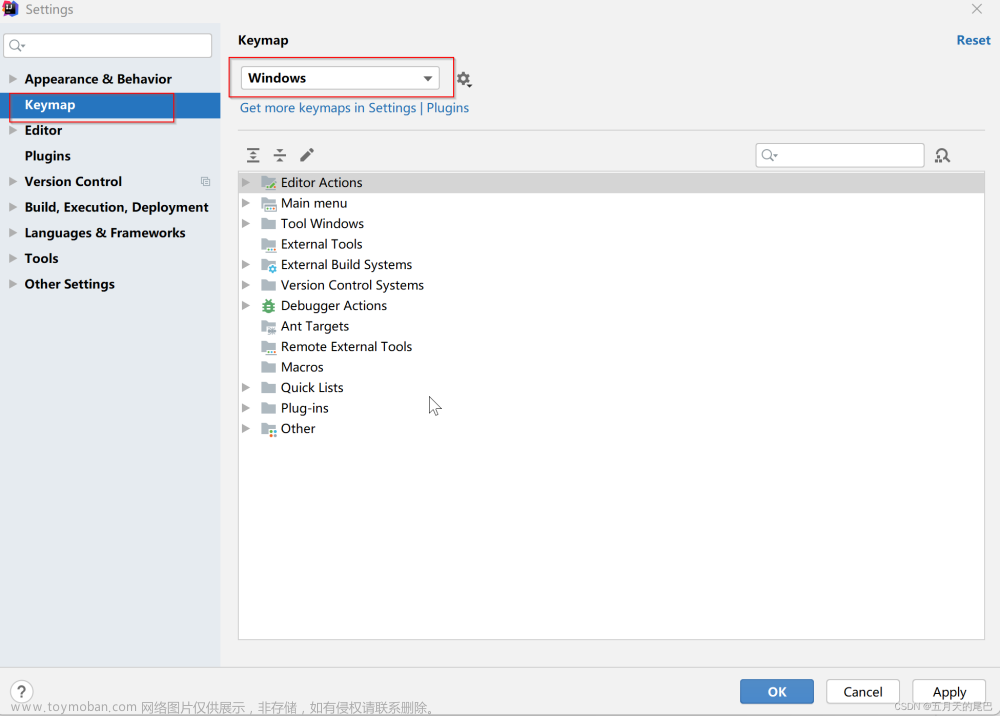快捷键
ctrl+b(backward) 光标左移一个字符
ctrl+f(foreward) 光标右移一个字符
ctrl+a(a是?????) 光标移到命令开头
ctrl+e(end) 光标移到命令末端
esc+b (backward) 光标左移一个词
esc+f (foreward) 光标右移一个词
ctrl+z 一次性退出特权模式 Router#
模式:
用户模式(user execution mode),特权模式(privilege execution mode),全局配置模式(global configuration mode),以及在全局配置模式下的具体配置模式(如路由接口配置模式,路由子接口配置模式,路由协议【rip,eigrp,ospf等】配置模式,line配置模式等)模式的转换;
连接路由后首先进入的是用户模式,特征是有符号">",用户模式只能查找路由的配置和状态,不能配置路由,需要配置路由必须进入特权模式,进入特权模式的命令是:enable 若有密码,需要正确密码才能进入,进入特权模式,其特征是有符号"#".从特权模式进入路由全局配置模式命令是:configure terminal
补充路由协议:
(1)静态路由
(2)RIP
(3)EIGRP
(4)OSPF
(5)路由重发
从全局配置模式进入各个具体配置模式的命令如下:
--->路由接口配置模式
interface serial 0/0(串口)
interface ethernet 0/0以太网口)
interface fastEthernet 0/0(端口配置)
--->路由子接口配置模式
interface fastEthernet 0/0.1
--->路由协议配置模式
router rip
--->line配置模式
line vty 0 4(虚拟终端)
.......
查看各个模式下的命令以及用法:
用户模式:Router>
show ping telnet connect的用法和特权模式一样
特权模式:Router#show ?(可以查看想要的信息)
常用几种
| show running-config | 查看在RAM中的配置文件 |
| show ip interface brief | 查看接口的ip设置和状态 |
| show (xxx)protocol | 查看路由器的xxx协议 |
| show interfaces 具体端口 | 查看路由器特定端口的状态 |
| .... |
全局配置模式:Router(config)#
| hostname xxx(名字) | 更改路由名字 |
|
enable password/secret *** |
修改进入特权模式的password/secret密码 |
| ip host xx(名字) xxx(ip地址) | 添加ip与名字的映射 |
| service password-encryption | 将各种密码加密(secret已经加密) |
| interface xxx | 进入各种接口 |
| end | 从全局配置模式退出到用户模式 |
| exit | 一步一步的退出,即逐层地推出,输入一个exit则推出一层 |
| ... |
接口配置模式:Router(config-if)#
| clock rate 64000 | 设置DCE的时钟频率(DTE不需要) |
| ip address ......(ip地址) | 设置接口的ip地址 |
| no shutdown | 打开接口 |
| shutdowm | 关闭端口 |
line配置模式:Router(config-line)#
line vty 0 4
password ***
login 设置最大用户登陆数并且设置登陆密码
收录最常用的Cisco命令分类如下:
1. switch配置命令
(1)模式转换命令
用户模式----特权模式,使用命令"enable"
特权模式----全局配置模式,使用命令"config t"
全局配置模式----接口模式,使用命令"interface+接口类型+接口号"
全局配置模式----线控模式,使用命令"line+接口类型+接口号"
注:
用户模式:查看初始化的信息.
特权模式:查看所有信息、调试、保存配置信息
全局模式:配置所有信息、针对整个路由器或交换机的所有接口
接口模式:针对某一个接口的配置
线控模式:对路由器进行控制的接口配置
(2)配置命令
show running config 显示所有的配置
show versin 显示版本号和寄存器值
shut down 关闭接口
no shutdown 打开接口
ip add +ip地址 配置IP地址(secondary+IP地址 为接口配置第二个IP地址)
show interface+接口类型+接口号 查看接口管理性
show controllers interface 查看接口是否有DCE电缆
show history 查看历史记录
show terminal 查看终端记录大小
hostname+主机名 配置路由器或交换机的标识
config memory 修改保存在NVRAM中的启动配置
exec timeout 0 0 设置控制台会话超时为0
service password-encryptin 手工加密所有密码
enable password +密码 配置明文密码
ena sec +密码 配置密文密码
line vty 0 4/15 进入telnet接口
password +密码 配置telnet密码
line aux 0 进入AUX接口
password +密码 配置密码
line con 0 进入CON接口
password +密码 配置密码
bandwidth+数字 配置带宽
no ip address 删除已配置的IP地址
show startup-config 查看NVRAM中的配置信息,即查看启动配置文件
show running-config 查看现行配置文件
copy running-config startup-config 将现行配置好的信息保存到启动配置文件里,这样下次路由器启动的时候就是这次配置的结果
write 保存信息到NVRAM,即保存到启动配置文件里
erase startup-config 清除NVRAM中的配置信息,即清除启动配置文件
show ip interface brief 查看接口的谪要信息
banner motd # +信息 + # 配置路由器或交换机的描素信息
description+信息 配置接口听描素信息
vlan database 进入VLAN数据库模式
vlan +vlan号+ 名称 创建VLAN
switchport access vlan +vlan号 为VLAN为配接口
interface vlan +vlan号 进入VLAN接口模式
ip add +ip地址 为VLAN配置管理IP地址
vtp+service/tracsparent/client 配置SW的VTP工作模式
vtp +domain+域名 配置SW的VTP域名
vtp +password +密码 配置SW的密码
switchport mode trunk 启用中继
no vlan +vlan号 删除VLAN
show spamming-tree vlan +vlan号 查看VLA怕生成树议
2. 路由器配置命令
ip route+非直连网段+子网掩码+下一跳地址 配置静态/默认路由
show ip route 查看路由表
show protocols 显示出所有的被动路由协议和接口上哪些协议被设置
show ip protocols 显示了被配置在路由器上的路由选择协议,同时给出了在路由选择协议中使用的定时器等信息
router rip 激活RIP协议
network +直连网段 发布直连网段
interface lookback 0 激活逻辑接口
passive-interface +接口类型+接口号 配置接口为被动模式
debug ip +协议 动态查看路由更新信息
undebug all 关闭所有DEBUG信息
router eigrp +as号 激活EIGRP路由协议
network +网段+子网掩码 发布直连网段
show ip eigrp neighbors 查看邻居表
show ip eigrp topology 查看拓扑表
show ip eigrp traffic 查看发送包数量
router ospf +process-ID 激活OSPF协议
network+直连网段+area+区域号 发布直连网段
show ip ospf 显示OSPF的进程号和ROUTER-ID
encapsulation+封装格式 更改封装格式
no ip admain-lookup 关闭路由器的域名查找
ip routing 在三层交换机上启用路由功能
show user 查看SW的在线用户
clear line +线路号 清除线路
3. 三层交换机配置命令
配置一组二层端口
configure terminal 进入配置状态
nterface range {port-range} 进入组配置状态
配置三层端口
configure terminal 进入配置状态
interface {{fastethernet | gigabitethernet} interface-id} | {vlan vlan-id} | {port-channel port-channel-number} 进入端口配置状态
no switchport 把物理端口变成三层口
ip address ip_address subnet_mask 配置IP地址和掩码
no shutdown 激活端口
例:
Switch(config)# interface gigabitethernet0/2
Switch(config-if)# no switchport
Switch(config-if)# ip address 192.20.135.21 255.255.255.0
Switch(config-if)# no shutdown
配置VLAN
configure terminal 进入配置状态
vlan vlan-id 输入一个VLAN号, 然后进入vlan配态,可以输入一个新的VLAN号或旧的来进行修改。
name vlan-name 可选)输入一个VLAN名,如果没有配置VLAN名,缺省的名字是VLAN号前面用0填满的4位数,如VLAN0004是VLAN4的缺省名字
mtu mtu-size (可选) 改变MTU大小
例
Switch# configure terminal
Switch(config)# vlan 20
Switch(config-vlan)# name test20
Switch(config-vlan)# end
或
Switch# vlan database
Switch(vlan)# vlan 20 name test20
Switch(vlan)# exit
将端口分配给一个VLAN
configure terminal 进入配置状态
interface interface-id 进入要分配的端口
switchport mode access 定义二层口
switchport access vlan vlan-id 把端口分配给某一VLAN
例
Switch# configure terminal
Enter configuration commands, one per line. End with CNTL/Z.
Switch(config)# interface fastethernet0/1
Switch(config-if)# switchport mode access
Switch(config-if)# switchport access vlan 2
Switch(config-if)# end
Switch#
配置VLAN trunk
configure terminal 进入配置状态
interface interface-Id 进入端口配置状态
switchport trunk encapsulation {isl | dot1q | negotiate}配置trunk封装ISL 或 802.1Q 或自动协商
switchport mode {dynamic {auto | desirable} | trunk} 配置二层trunk模式。
dynamic auto—自动协商是否成为trunk
dynamic desirable—把端口设置为trunk如果对方端口是trunk, desirable, 配置Native VLAN(802.1q)
或自动模式,trunk—设置端口为强制的trunk方式,而不理会对方端口是否为trunk
switchport access vlan vlan-id 可选) 指定一个缺省VLAN, 如果此端口不再是trunk
switchport trunk native vlan vlan-id 指定802.1Q native VLAN号
例:
Switch# configure terminal
Enter configuration commands, one per line. End with CNTL/Z.
Switch(config)# interface fastethernet0/4
Switch(config-if)# switchport mode trunk
Switch(config-if)# switchport trunk encapsulation dot1q
Switch(config-if)# end
定义TRUNK允许的VLAN
configure terminal子进入配置状态
interface interface-id 进入端口配置
switchport mode trunk 配置二层口为trunk
switchport trunk allowed vlan {add | all | except | remove} vlan-list可选) 配置trunk允许的VLAN.使用add, all, except, remove关健字
no switchport trunk allowed vlan 允许所有VLAN通过
例
Switch(config)# interface fastethernet0/1
Switch(config-if)# switchport trunk allowed vlan remove 2
Switch(config-if)# end
配置Native VLAN(802.1q)
configure terminal 进入配置状态
interface interface-id 进入配置成802.1qtrunk的端口
switchport trunk native vlan vlan-Id 配置native VLAN号
no switchport trunk native vlan 端口配置命令回到缺省的状态
配置基于端口权值的负载均衡
configure terminal 进入Switch 1配置状态
vtp domain domain-name 配置VTP域
vtp mode server 将Switch 1配置成VTP server.
show vtp status 验证VTP的配置
show vlan 验证VLAN
configure terminal 进入配置状态
interface fastethernet 0/1 进入F0/1端口
switchport trunk encapsulation {isl | dot1q | negotiate}配置trunk封装
switchport mode trunk 配置成trunk
show interfaces fastethernet0/1 switchport 验证VLAN配置
按以上步骤对想要负载均衡的接口进行配置
在另一个交换机上进行此配置
show vlan 当trunk已经起来,在switch2上验证已经学到相的vlan配置
configure terminal 在Switch 1上进入配置状态
interface fastethernet0/1 进入要配置的端口
spanning-tree vlan 8 port-priority 10 将端口权值10赋与VLAN 8.
spanning-tree vlan 9 port-priority 10 将端口权值10赋与VLAN 9.
spanning-tree vlan 10 port-priority 10 将端口权值10赋与VLAN 10.
interface fastethernet0/2 进入F0/2
spanning-tree vlan 3 port-priority 10 将端口权值10赋与VLAN 3.
spanning-tree vlan 4 port-priority 10 将端口权值10赋与VLAN 4
spanning-tree vlan 5 port-priority 10 将端口权值10赋与VLAN 5
spanning-tree vlan 6 port-priority 10 将端口权值10赋与VLAN 10
end 退出
show running-config 验证配置
copy running-config startup-config 保存配置
配置STP路径值的负载均衡
Trunk1走VLAN8-10,Trunk2走VLAN2-4
configure terminal 进入 Switch 1配置状态
interface fastethernet 0/1 进入F0/1
switchport trunk encapsulation {isl | dot1q | negotiate}配置封装
switchport mode trunk 配置Trunk,缺省是ISL封装
exit 退回
在F0/2口上重复2-4步骤
exit 退回
show running-config 验证配置
show vlan验证switch1 已经学到Vlan
configure terminal 进入配置状态
interface fastethernet 0/1 进入F0/1
spanning-tree vlan 2 cost 30 设置Vlan2生成树路径值为30
spanning-tree vlan 3 cost 30 设置Vlan3生成树路径值为30
spanning-tree vlan 4 cost 30 设置Vlan4生成树路径值为30
end 退出
在switch1的F0/2上重复9-11步骤设置VLAN8,9,10生成树路径值为30
end 退出
show running-config 验证配置
copy running-config startup-config 保存配置
补充:CISCO命令集——路由选择协议及排障
*ip route命令
Router(config)# ip route <目录网络或子网号> [子网掩码] <下一路由器IP地址 | 从本地出口的地址> [管理距离0~255,默认为1]
(注:静态地址配置)
*ip default-network命令
Router(config)# ip default-network <目标网络号>
(注:配合路由协使用,用其中的一个动态路由号作默认路由配置)
Router(config)# ip route 0.0.0.0 0.0.0.0 <下一路由器IP地址 | 从本地出口的地址>
(注:只有一个公网地址时,在出口路由器上的配置)
*内部路由选择协议
*使用router和network命令
Router(config)# router <路由协议rip | igrp | eigrp | ospf | is-is等> [自主系统号]
Router(config-router)# network <直接相连的要用此路由协议的网络号>
Router(config-router)# network <直接相连的要用此路由协议的网络号>
*路由信息协议RIP
Router(config)# router rip
Router(config-router)# network <直接相连的要用rip协议的有类别网络号>
Router# show ip protocols
Router# show ip route
Router# debug ip rip
*内部网关路由协议IGRP
Router(config)# router igrp <自主系统号>
Router(config-router)# network <直接相连的要用igrp协议的有类别网络号>
Router# show ip interface
Router# show ip protocols
Router# show ip route
Router# debug ip rip
*排除网络故障
排除网络故障的一个总体模型
Router# ping <有故障的主机 | 有故障的IP地址>
Router# show ip route
Router# show interface <有故障的接口>
Router# show run
*IP的故故障排除
检查可用的路由
Router# show ip route <有故障的IP地址>
27.4.4 跟踪路由(Tracing the Route)
SUN-A> traceroute <有故障的主机 | 有故障的IP地址>
C:\windows\> winipcfg
C:\windows\> ipconfig
C:\windows\> ipconfig / all
C:\windows\> tracert <有故障的主机 | 有故障的IP地址>
使用扩展的ping来跟踪连接性
Router# ping
*其它可能的故障
一个地址解析(ARP)的故障
Router# show arp
Router# show interface <有故障的接口>
C:\windows\> arp -a
SUN-A> arp –a
验证终端系统的路由表
C:\windows\> netstat –rn
C:\windows\> route –f add 0.0.0.0 mask 0.0.0.0 <需要添加入的网关地址>
C:\windows\> route [–f ] [[print | add | delete | change] [destination] [mask netmask] [gateway]]
C:\windows\> route add mask <网络掩码> <网关ip地址>
C:\windows\> route delete mask <网络掩码> <网关ip地址>
C:\windows\> nbtstat <相应的参数>
SUN-A> netstat -rn路由器
======================================================================
Router1>enable --路由器特权用户enable
======================================================================
路由器帮助的使用
Router1#delete ?
Router1#erase ?
======================================================================
Router1#erase startup-config --删除路由器以前的所有配置
Router1#erase nvram
Router1#reload --重启路由器
======================================================================
路由器的模式
Router>enable --用户模式
Router#config terminal --特权模式
Router(config)#interface ethernet 0 --全局配置模式
Router(config-if)#exit --接口模式
Router(config)#line vty 0 4 --终端配置模式
Router(config-line)#exit --exit退出当前模式
Router(config)#exit
Router#disable
Router>logout
======================================================================
路由器时钟的设置
Router#show clock --显示路由器时钟
*00:10:30.291 UTC Mon Mar 1 1993
Router#clock ?
Router#clock set ?
Router#clock set 11:50:40 21 august 2004 --配置路由器时钟
Router#show clock
11:50:49.435 UTC Sat Aug 21 2004
Router#write --保存路由器的配置
或者
Router#copy running-config startup-config
======================================================================
路由器常见命令
Router#show running-config --显示路由器的当前配置
Router#show startup-config --显示路由器的启动配置
Router#show flash --显示路由器的*作系统信息
Router#show version --显示路由器的软硬件配置
Router#copy running-config startup-config --保存配置
Router#copy startup-config running-config --将NVRAM中的启动配置拷到DRAM中
Router#show interface --显示接口信息
Router#show interface Ethenet 0
Router#show interface Serial 0
Router#config terminal
Router(config)#hostname Router2 --为路由器取名字
======================================================================
为路由器的以太口配置IP地址
Router2>en
Router2#config t
Router2(config)#interface ethernet 0
Router2(config-if)#ip address 192.168.0.101 255.255.255.0 --配置IP地址
Router2(config-if)#no shutdown --启用以太口
Router2(config-if)#exit
Router2(config)#exit
Router2#ping 192.168.0.101
Router2#ping 192.168.0.199
Router2#config t
Router2(config)#int e0 --路由器一个接口可同时配置多个IP,其他IP必须加secondary
Router2(config-if)#ip address 131.107.0.101 255.255.0.0 secondary
Router2(config-if)#ip address 200.100.100.101 255.255.255.0 secondary
Router2(config-if)#exit
Router2(config)#exit
Router2#ping 131.107.0.101
Router2#ping 200.100.100.101
Router2#show running-configure
Router2#config t
Router2(config)#int e0
Router2(config-if)#ip address 192.168.0.101 255.255.255.0
Router2(config-if)#no shutdown
Router2(config-if)#exit
Router2(config)#exit
Router2#write======================================================================
DCE端的配置
RA#show controller serial 1 --显示接口为DCE还是DTE
RA#config t
RA(config)#interface serial 1
RA(config-if)#ip address 10.0.0.1 255.0.0.0 --为串口配置IP地址
RA(config-if)#clock rate 64000 --在DCE端需要指定时钟频率,DTE端无需指定
RA(config-if)#no shut
RA(config-if)#exitDTE端的配置
RB(config)#interface serial 1
RB(config-if)#ip address 10.0.0.2 255.0.0.0 --两个路由器的串口的IP地址应该在一个网段
RB(config-if)#no shut
RB(config-if)#exit
RB(config)#exit
RB#ping 10.0.0.1 --两个路由器的串口必须都配置了IP地址,并使用了no shutdown命令才能PING通以下命令比较使常用:CCNA试验指导:
启动接口,分配IP地址:
router> enable
router#
router# configure terminal
router(config)#
router(config)# interface Type Port
router(config-if)# no shutdown
router(config-if)# ip address IP-Address Subnet-Mask
router(config-if)# ^z
配置RIP路由协议:30秒更新一次
router(config)# router rip
router(config-if)# network Network-Number <--通告标准A,B,C类网-->,比如10.2.3.0是个网络号,但必须写成network 10.0.0.0
router(config-if)# ^z配置IGRP路由协议:90秒更新一次
router(config)# router igrp AS-Number <-- AS-Number范围1~65535-->
router(config-if)# network Network-Number <--通告标准A,B,C类网-->
router(config-if)# ^z配置Novell IPX路由协议:Novell RIP 60秒更新一次
router(config)# ipx routing [node address]
router(config)# ipx maximum-paths Paths <--设置负载平衡,范围1~512-->
router(config)# interface Type Port
router(config-if)# ipx network Network-Number [encapsulation encapsulation-type] [secondary] <--通告标准A,B,C类网-->
router(config-if)# ^z配置DDR:
router(config)# dialer-list Group-Number protocol Protocol-Type permit [list ACL-Number]
router(config)# interface bri 0
router(config-if)# dialer-group Group-Number
router(config-if)# dialer map Protocol-Type Next-Hop-Address name Hostname Telphone-Number
router(config-if)# ^z配置ISDN:
router(config)# isdn swith-type Swith-Type <--配置ISDN交换机类型,中国使用basic-net3-->
router(config-if)# ^z
配置Frame Relay:
router(config-if)# encapsulation frame-relay [cisco | ietf ]
router(config-if)# frame-relay lmi-type [ansi | cisco | q933a ]
router(config-if)# bandwidth kilobits
router(config-if)# frame-relay invers-arp [ Protocol ] [dlci ]<--配置静态Invers ARP表:
router(config)# frame-relay Protocol Protocol-Address DLCI [ Broadcast ] [ ietf | cisco ] [ payload-compress | packet-by-packet ]
-->
<--设置Keepalive间隔:
router(config-if)# keepalive Number
-->
<--为本地接口指定DLCI:
router(config-if)# frame-lelay local-dlci Number
-->
<--子接口配置:
router(config-if)# interface Type Port.Subininterface-Number [ multipoint | point-to-point ]
router(config-subif)# ip unnumbered Interface
router(config-subif)# frame-lelay local-dlci Number
-->
router(config-if)# ^z
配置标准ACL:
router(config)# access-list Access-List-Number [ permit | deny ] source [ source-mask ] <-- Access-List-Number 范围:1~99标准ACL;100~199扩展ACL;800~899标准IPX ACL;900~999扩展IPX ACL;1000~1099 IPX SAP ACL;600~699Apple Talk ACL-->
router(config)# interface Type Port
router(config-if)# ip access-group Access-List-Number [ in | out ]
router(config-if)# ^z
配置扩展ACL:
router(config)# access-list Access-List-Number [ permit | deny ] [ Protocol | Protocol-Number ] source source-wildcard [ Source-Port ] destination destination-wildcard [ Destination-Port ] [ established ]
router(config)# interface Type Port
router(config-if)# ip access-group Access-List-Number [ in | out ]
router(config-if)# ^z
配置命名ACL:
router(config)# ip access-list [ standard | extended ] ACL-Name
router(config [ std- | ext- ] nacl)# [ permit | deny ] [ IP-Access-List-Test-Conditions ]
router(config [ std- | ext- ] nacl)# no [ permit | deny ] [ IP-Access-List-Test-Conditions ]
router(config [ std- | ext- ] nacl)# ^z
router(config)# interface Type Port
router(config-if)# ip access-group [ACL-Name | 1~199 ] [ in | out ]
router(config-if)# ^z
配置DCE时钟:
router# show controllers Type Port <--确定DCE接口-->
router(confin-if)# clock rate 64000 <--进入DCE接口设置时钟速率-->
router(config-if)# ^z
配置PPP协议:
router(config)# username Name password Set-Password-Here <--验证方建立数据库-->
router(config)# interface Type Port
router(config-if)# encapsulation ppp <--启动PPP协议-->
router(config-if)# ppp outhentication [ chap | chap pap | pap chap | pap ] <--选择PPP认证-->
router(config-if)# ppp pap sent-username Name password Password <--发送验证信息-->
router(config-if)# ^z
PAP单向认证配置实例:
验证方:
router-server(config)# username Client password 12345 <--验证方建立数据库-->
router-server(config)# interface serial 0
router-server(config-if)# encapsulation ppp
router-server(config-if)# ppp authentication pap <--选择使用PAP实现PPP认证-->
router-server(config-if)# ^z
被验证方:
router-client(config-if)# encapsulation ppp
router-client(config-if)# ppp pap sent-username Client password 12345 <--发送验证信息-->
router-client(config-if)# ^z
PAP双向认证配置实例:
路由器 A:
routerA(config)# username B password 12345
routerA(config)# interface serial 0
routerA(config-if)# encapsulation ppp
routerA(config-if)# ppp authentication pap
routerA(config-if)# ppp pap sent-username A password 54321
routerA(config-if)# ^z
路由器 B:
routerB(config)# username A password 54321
routerB(config)# interface serial 1
routerB(config-if)# encapsulation ppp
routerB(config-if)# ppp authentication pap
routerB(config-if)# ppp pap sent-username B password 12345
routerB(config-if)# ^z
CHAP单向认证配置实例:
验证方:
router-server(config)# username router-client password 12345
router-server(config)# interface serial 0
router-server(config-if)# encapsulation ppp
router-server(config-if)# ppp authentication chap
router-server(config-if)# ^z
被验证方:
router-client(config-if)# encapsulation ppp
router-client(config-if)# ppp authentication chap
router-client(config-if)# ppp chap hostname router-client
router-client(config-if)# ppp chap password 12345
router-client(config-if)# ^z
CHAP双向认证配置实例:
路由器 A:
routerA(config)# username routerB password 12345
routerA(config)# interface serial 0
routerA(config-if)# encapsulation ppp
routerA(config-if)# ppp authentication chap
routerA(config-if)# ppp chap hostname routerA
routerA(config-if)# ppp chap password 54321
routerA(config-if)# ^z
路由器 B:
routerB(config)# username routerA password 54321
routerB(config)# interface serial 1
routerB(config-if)# encapsulation ppp
routerB(config-if)# ppp authentication chap
routerB(config-if)# ppp chap hostname routerB
routerB(config-if)# ppp chap password 12345
routerB(config-if)# ^z
Telnet使用:
routerA# terminal monitor <--可以传回在远端主机执行Debug命令的结果-->
routerA# telnet IP-Address [ Router-Name ] <--Telnet到指定的地址或名字的主机-->
routerB# [ exit | logout ] <--退出Telnet-->
routerB# ++<6>再按 <--挂起Telnet-->
routerA# show sessions <--显示当前所有Telnet的信息,包括Connect-Number -->
routerA# Connect-Number <--返回指定的Telnet连接-->
routerA# disconnect IP-Address [ Router-Name ] <--断开指定地址或名字的主机的连接-->
routerA# show user <--显示Telnet到本机的连接信息-->
routerA# clear line [ 0 | 1 | 2 | 3 | 4 ] <--断开指定Telnet到本机的连接-->
禁止任何Telnet到本机:
router(config)# line vty 0 4
router(config-line)# access-class ACL-Number文章来源:https://www.toymoban.com/news/detail-419844.html
router(config)#文章来源地址https://www.toymoban.com/news/detail-419844.html
到了这里,关于Cisco命令大全的文章就介绍完了。如果您还想了解更多内容,请在右上角搜索TOY模板网以前的文章或继续浏览下面的相关文章,希望大家以后多多支持TOY模板网!












